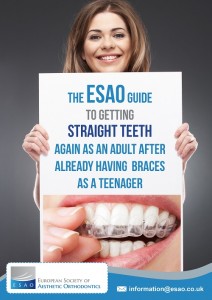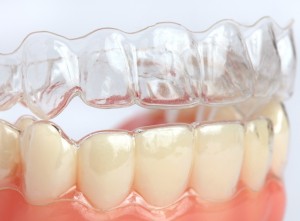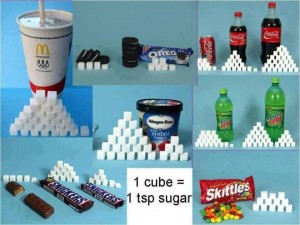Category: Dentistry
Blog posts and articles about general dentistry treatments from Dr Nishan Dixit, your Harrow dentist
Who said I’m camera shy !
What’s the Best Way to Whiten My Teeth?
Why You Should Have Straight Teeth, This Might Surprise You.
My Sweet Treats
A cosmetic dentistry article by Nishan Dixit
Have your teeth become crooked again after having braces when you were younger?
 One of the most common reasons for patients visiting the dentist for teeth straightening is relapse after having orthodontics when they were younger. Patients often find that once they stop wearing their retainers that their teeth can begin to move back to where they were before. Coupled with the fact that as we get older our teeth have a tendency to drift forwards and become more overcrowded.
One of the most common reasons for patients visiting the dentist for teeth straightening is relapse after having orthodontics when they were younger. Patients often find that once they stop wearing their retainers that their teeth can begin to move back to where they were before. Coupled with the fact that as we get older our teeth have a tendency to drift forwards and become more overcrowded.So what is the solution?
Rapid Tooth Straightening
- Six Month Smiles
- Inman Aligner
- CFast
Six Month Smiles
 As the name suggests Six Month Smiles offers orthodontics which take, on average, six months to achieve the new look. The system is fixed using tooth coloured wires and brackets to ensure that no one else knows that you have braces fitted. As with most of these aesthetic orthodontic options Six Month Smiles is only used to straighten the front six teeth, often known as the social six.
As the name suggests Six Month Smiles offers orthodontics which take, on average, six months to achieve the new look. The system is fixed using tooth coloured wires and brackets to ensure that no one else knows that you have braces fitted. As with most of these aesthetic orthodontic options Six Month Smiles is only used to straighten the front six teeth, often known as the social six.Inman Aligner
Cfast
Almost Invisible Tooth Straightening
Clear Aligners
 Clear Aligners are exactly that, completely clear. They work by moving your teeth a small amount at a time. You will be provided with a series of aligners which you will typically wear for about two weeks each. Each aligner puts a small amount of pressure on your teeth to move them or rotate them to their new position. Once your teeth have moved a tiny amount you will replace the aligner with the next one in the series.
Clear Aligners are exactly that, completely clear. They work by moving your teeth a small amount at a time. You will be provided with a series of aligners which you will typically wear for about two weeks each. Each aligner puts a small amount of pressure on your teeth to move them or rotate them to their new position. Once your teeth have moved a tiny amount you will replace the aligner with the next one in the series.In Summary
- Dr Dixit is the new President of British Academy of Cosmetic Dentistry - 28 May 2020
- Does Invisalign hurt? - 9 March 2020
- How Long Does Invisalign Take? - 27 February 2020
How much sugar is too much sugar?
In the dental profession we have been warning about the intake of too much sugar for many years, but why is this? It was originally the ancient Greeks that noticed that if they ate too many soft sweet things it destroyed their teeth, at first they thought it was the sugar which was directly responsible for attacking the teeth however we know today that this is not the case.
When you eat sugar not only does it act as a food for you, it acts as a food for the streptococcus bacteria in your mouth. As these bacteria feed on the sugar they excrete acids and it is these acids which eat away and attack the enamel outer layer of your teeth. These bacteria can be found in the plaque which often collects in between teeth or around the tooth/gum margin, this is why it is important to keep your teeth cleaned daily, flossing and rinsing to ensure that the plaque does not build up and give somewhere for the bacteria to hide.
So, back to our original question..
How much sugar is too much sugar?
The Journal of Dental Research carried out a systematic review to inform WHO guidelines on the effects of restricting sugar intakes in various age groups. The research looked at % of sugar in a daily diet and its relationship to the onset of decay. The problem has been that the research has been interpreted misguidedly.
Various newspapers have unfortunately taken the step of converting this % of sugar into a spoonful amount, probably to make it easier for the general public to work out how much sugar they should be having. These Papers have converted this into between 5 and 7 teaspoons per day. Unfortunately doing this leads people to assume that they can have 5 or 7 teaspoons per day on their cereal, coffee , tea or anywhere else they add sugar.
The biggest problem is they forget that most of the sugar we eat daily is hidden within foods, not added by us afterwards. If we only count the spoonfuls of sugar we add to our food then we will be dramatically exceeding the recommended amounts!
The research reported the following results in their abstract:
- 42 out of 50 of the studies in children, and 5 out of 5 in adults, reported at least one positive association between sugars and dental decay
- there was “moderate quality” evidence showing a lower risk of dental decay when sugar intake is less than 10% of calorie intake, compared with more than 10%
- there was “very low quality” evidence showing a lower risk of dental decay when sugar intake is less than 5%, compared with 5-10% of calorie intake
So it seems that the research is suggesting if we keep our sugar intake below 10% of calorie intake then there is ‘moderate quality’ evidence to show a lower risk of dental decay… So perhaps we should start doing that!
How do we know how much sugar we are eating?

We thought we’d give a rough guide to the amount of sugar contained within various food stuffs so that you can be sure to keep your intake ideally less than 10%.
- A can of Coke contains approximately 11 spoonfuls of sugar increasing to 28 spoonfuls in the largest bottle
- a McDonald’s Coke also contains 28 spoonfuls of sugar
- a tub of Haagen Das ice cream contains 21 spoonfuls of sugar
- the average chocolate bar contains around 10 spoonfuls of sugar
- one breakfast pop tarts contains approximately 4 1/2 spoonfuls of sugar
- One bowl of frosted cornflakes contains 6 spoonfuls of sugar
- One NutriGrain Contains 3 1/2 spoonfuls of sugar
- A Starbucks Mocha Frappuccion contains 12 spoonfuls of sugar
- A McDonald’s Medium chocolate milkshake contains 28 spoonfuls of sugar
Statistics taken from Sugar Stacks – They have included all forms of sugar in these statistics and have simply turned it into a ‘spoonfuls’ amount to make it easier to understand.
Summary
Research over the years has clearly shown that Eating too much sugar will directly impact oral health, the only question lies around exactly how much is too much. The new research seems to suggest that when we keep sugar intake below 10% (Or around 5 to 7 spoonfuls of all sugar intake per day) there is moderate quality evidence showing a lower risk of dental decay, and that can only be good.
Our advice therefore is to look at the quantity of sugar in the food that you eat, remember that sugar can be from many sources and it’s not just the sugar which we add to food that counts.
So how much sugar do you eat per day? Let us know in the comments section below this blog post, and then tell us what you’re going to do to cut down…
Tips for better oral health
How to Look After Your Teeth
There are lots of things you can do to maintain your dental health and achieve a fresh and attractive smile. Here are a few top tips to get you going….
01 Brush your teeth at least twice a day. When you brush, don’t rush. Take enough time to do a thorough job – two minutes is recommended.
02 Use toothpaste that contains flouride to help prevent cavities.
03 Consider using an electric or battery-operated tooth brush, especially if you have arthritis or other problems that make it difficult to brush effectively.
04 Practice good technique. Hold your toothbrush at a slight angle against your teeth and brush with short back-and-forth motions. Remember to brush the inside and chewing surfaces of your teeth, as well as your tongue. Avoid vigorous or harsh scrubbing, which can irritate your gums.
05 Know when to replace your toothbrush. Invest in a new toothbrush or a replacement head for your electric toothbrush every two to three months – or sooner if the bristles become frayed.
06 Cleaning between the teeth at least once a day is important as it removes food and plaque from between the teeth where even the best toothbrush can be ineffective. For most people, doing this once a day is enough and the best time to do it is after your last meal of the day. Clean between your teeth before or after brushing, but rinse your mouth afterward to wash out everything that has been dislodged.
07 Brush your tongue as well as your teeth to help eliminate mouth-borne bacteria and to keep your mouth and breath fresh.
08 A mouthwash can help with oral health. Mouthwashes with alcohol can dry out the mouth, so try to use brands that contain no alcohol.
09 Always wait 20-30 minutes before you brush your teeth after eating or drinking acidic food or drink, such as oranges, as this can erode the enamel on your teeth.
10 Avoid eating too much sugar and drinking sugary drinks such as soda, sweetened teas, or fruit juices, particularly in between meals.
11 Nuts, dairy foods such as cheese, and meats are all good dietry choices that can help strengthen enamel because of the calcium and vitamins they provide.
12 Chewing sugarless gum after a meal is a good way to substitute brushing inbetween meals; it can help remove food particles for between the teeth and produces saliva which counteract the bacteria.
13 Make sure you visit your dentist every six months and a hygienist visit to look after your teeth and gums.
14 If you have a toothache, it is important to seek emergency dental care immediately as this could be a potential infection or abcess.
Six Month Braces Videos
There you are a range of Six Month Smiles videos that have been uploaded to the Internet and so to help you in your search we thought it was a good idea to post a few of them here. Six Month Smiles is a revolutionary new orthodontic technique which allows you to have tooth coloured braces that can move your front teeth into a more cosmetic and aesthetically pleasing alignment.
Up until recently the only option for braces was to have the metal train track type – well, no longer is this the case with 6 Month Braces.
Our dental practice is the only provider of Six Month Braces in Harrow
This first video shows what can change in six months…
People are often asking for personal reviews of six months braces and how this treatment could work for them as an individual. Here is one such story of Mia who underwent straight teeth treatment with six month smiles.
Another video on six-month smiles
This video shows some patient reviews of the treatment, and then talks to a dentist about the treatment with braces and whether it could be right for you.
The Videos above have been taken from the six month smiles YouTube channel, however here is another video, again taken from YouTube, but this time taken from a private channel of a happy patient having six-month smiles… Here she gives her own case review.

